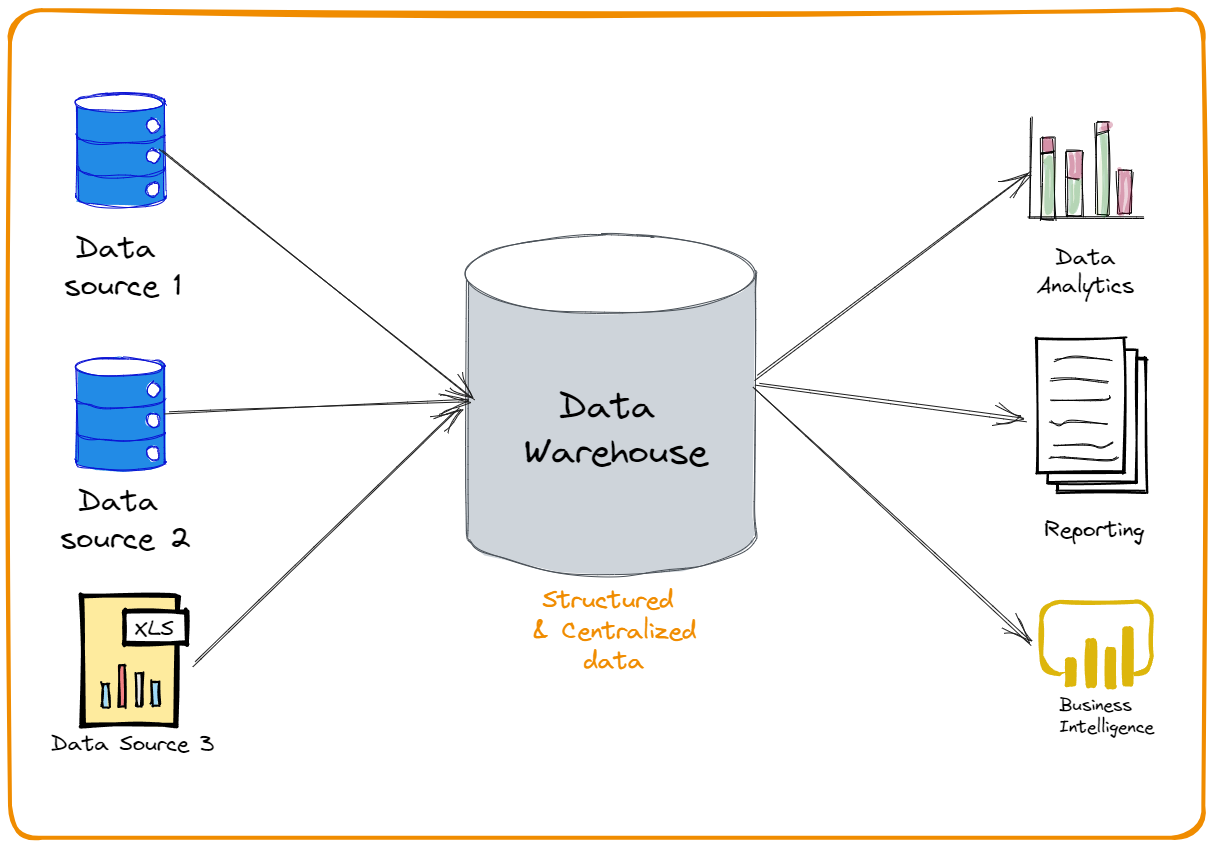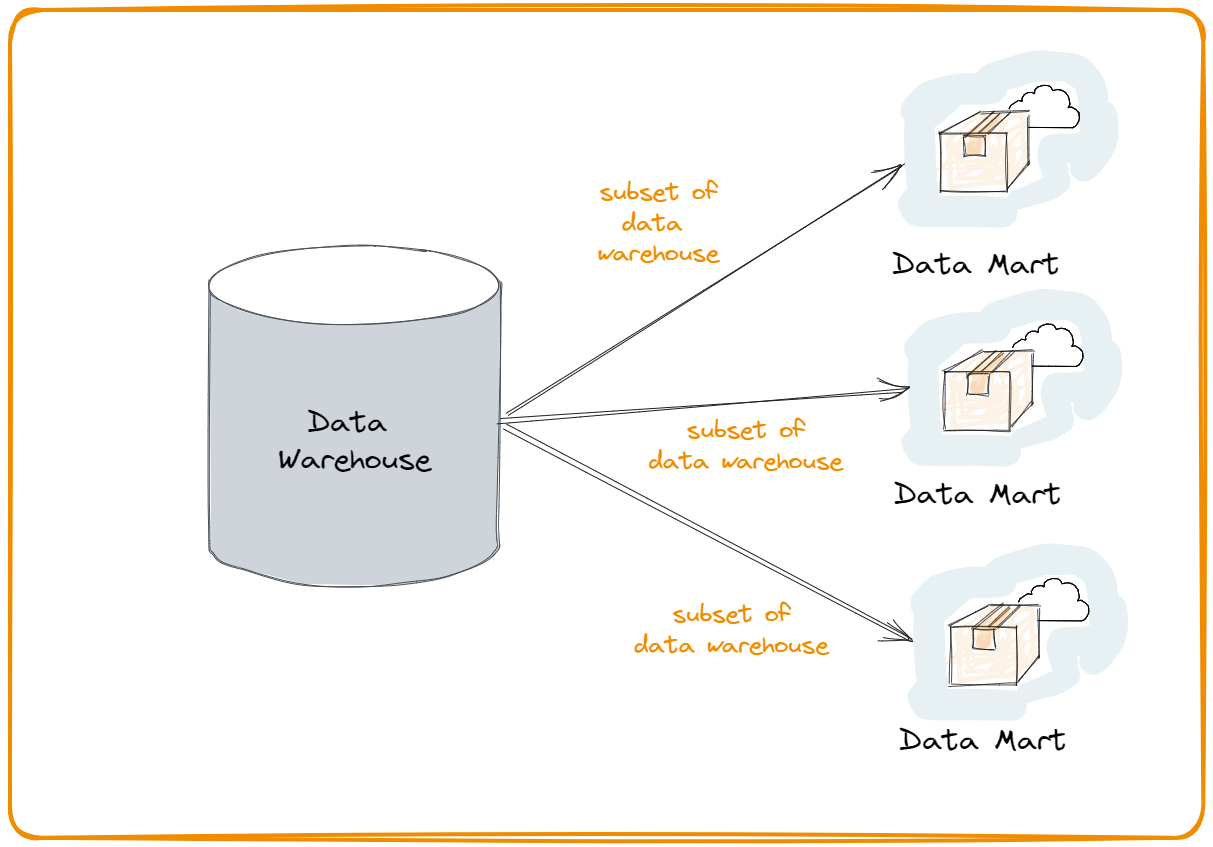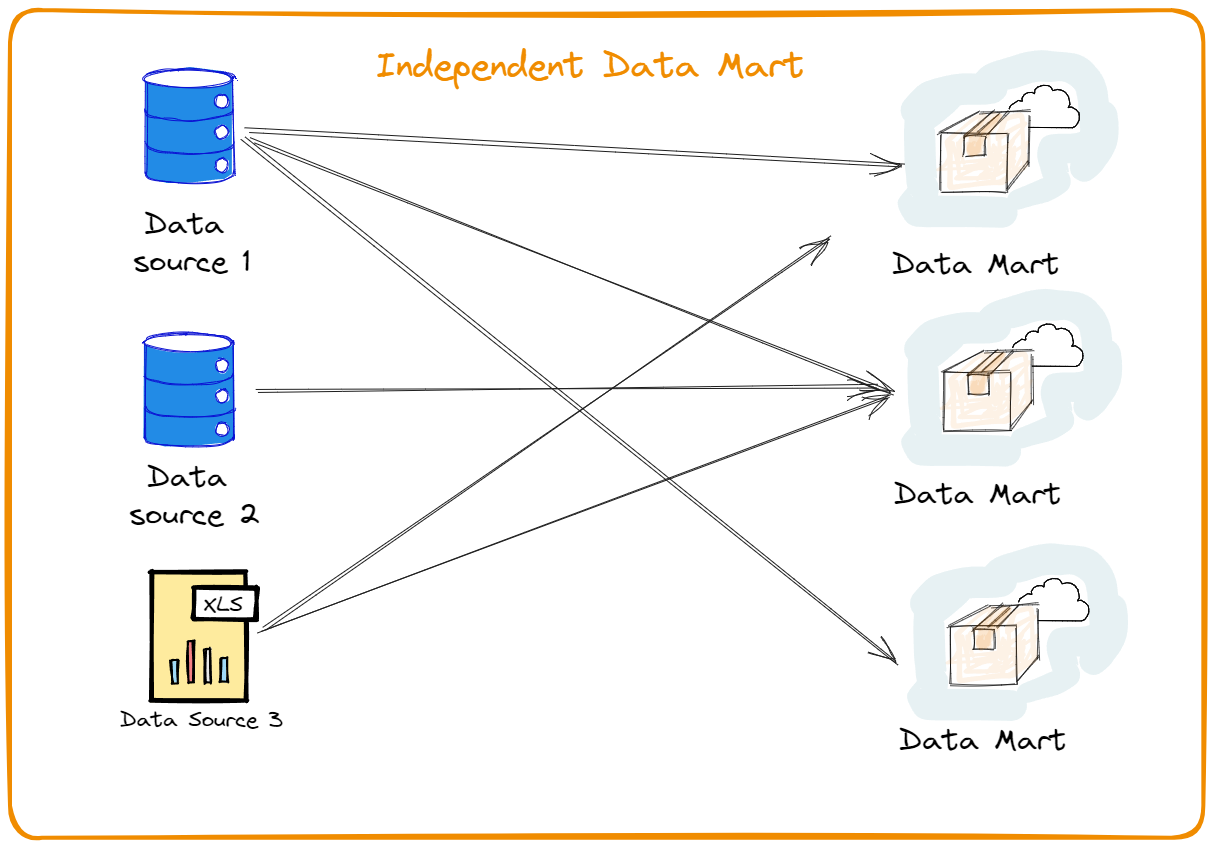In today’s data-driven world, organizations are continuously collecting vast amounts of information from a multitude of sources, such as customer interactions, sales data, and operational metrics. This deluge of data has sparked a revolution in the way businesses approach data management and analysis.
Among the pivotal concepts in this transformation are data warehouses and data marts. While they might sound similar, these two elements of data architecture serve distinct roles in helping organizations make sense of their data and, ultimately, make more informed decisions.
In this blog, we’ll embark on a journey to demystify the concepts of data warehouses and data marts, exploring their characteristics, differences, and how they contribute to improving business intelligence. We’ll dive into their individual features and use cases, shedding light on when and why organizations might choose one over the other, or even opt for both in their data strategy.
Whether you’re a data enthusiast, a business owner seeking insights from your data, or someone simply looking to understand the backbone of modern analytics, this guide will provide you with a comprehensive overview of data warehouses and data marts, equipping you with the knowledge you need to make informed decisions in the realm of data management.
So, let’s start by breaking down these fundamental elements of data architecture and explore the journey from raw data to actionable insights.
What Is A Data Warehouse ?

A single source of truth (SSOT) is a centralized repository that contains an organization’s most accurate, complete, and up-to-date data. The data is accessible to anyone who needs it.
A data warehouse is a type of SSOT. The data in a data warehouse is imported from source systems, such as ERP, CRM, or Finance platforms. It serves the purpose of aggregating structured & unstructured data from various systems within an organization by performing ETL(Extract – Transform – Load) and storing them in an structured and centralized way.
Data warehouses containing structured and centralized data then form the operational cornerstone in middleware BI environments, delivering end users with reports, dashboards, and other interactive interfaces.
Salient feature of Data Warehouse
William Inmon who is considered the father of data warehouse describes it to have these four salient features
Subject-Oriented: This means that the data in a data warehouse is organized and structured around specific subjects or topics that are of interest to the business such as customer data, product sales, inventory levels, or any other relevant aspect of the organization’s operations.
Integrated: It refers to the process of bringing data from various sources and systems within an organization and consolidating it into a single, unified view. This integration ensures that the data is consistent and accurate, even if it originates from different departments or databases.
Nonvolatile: Non Volatility means that the data in a data warehouse is relatively static and does not change frequently. Once data is loaded into the warehouse, it is typically not updated, overwritten, or deleted. This characteristic is essential for maintaining historical records and ensuring data consistency for analysis and reporting.
Time-Variant: The time-variant nature of data in a data warehouse means that it captures historical data and allows for the storage of data at different points in time. This temporal aspect is crucial for tracking changes, trends, and historical performance, making it possible to analyze data over various time intervals.
Pros & Cons Of Data Warehouse
Let’s start with the pros of data warehouses
Centralized Data: Data warehouses provide a centralized repository for storing and managing data from various sources within an organization.
Improved Data Quality: Data in a data warehouse is often cleaned, transformed, and validated, resulting in higher data quality and accuracy.
Enhanced Data Analysis: Data warehouses are optimized for complex querying and reporting, making it easier to analyze and derive insights from the data.
Historical Analysis: Data warehouses store historical data, allowing organizations to conduct trend analysis and make informed decisions based on past performance.
Data Integration: Data from different sources is integrated into a unified view, ensuring consistency and enabling a holistic understanding of the business.
Scalability: Modern data warehouses, especially cloud-based solutions, offer scalability, allowing organizations to handle ever-increasing data volumes.
Data Governance: Data governance processes are streamlined in data warehouses, making it easier to enforce data policies, security measures, and compliance standards.
Performance Optimization: Data warehouses are designed for efficient data retrieval and analysis, ensuring optimal performance for reporting and business intelligence.
Let’s now look at the cons of data warehouses
Cost: Building and maintaining a data warehouse can be expensive, including hardware, software, licensing, and ongoing operational costs.
Complexity: Data warehousing projects can be complex and time-consuming, requiring expertise in data modeling, ETL processes, and data integration.
Scalability Challenges: Traditional data warehouses may face scalability limitations, leading to performance issues as data volumes grow.
Data Latency: Data warehouses store historical data, resulting in latency when accessing the most up-to-date information. Real-time analysis can be challenging.
Data Quality Maintenance: Ensuring data quality requires ongoing effort, including data cleaning, validation, and transformation.
Rigid Schema: Fixed schemas in data warehouses can make them inflexible to changing business requirements, leading to difficulties in schema modifications.
Data Security and Compliance Concerns: Storing large volumes of sensitive data in data warehouses raises security and compliance concerns.
Now that we have seen in detail what data warehouses are, what are the reasons for using data warehouses and looking at their pros and cons, let’s now move on to another concept, data marts.
What Is A Data Mart ?

A data mart is a subset of a data warehouse that is designed to serve the data and reporting needs of a specific group or department within an organization. It’s a smaller, more focused database that typically contains a particular subject area or domain of data.
Data marts are built on top of data warehouses to cater to the needs of individual departments. So, for a data warehouse of an e-commerce website, the data marts could be for sales, order fulfillment, marketing, finance, etc.
The reason for building data marts is to provide subsets of data for faster and easier access instead of querying the entire data stored in a data warehouse.
Salient feature of Data Mart
Let’s look at some important attributes and features of data marts.
Data Focus: Data marts are designed to store data relevant to a specific business function or department. For example, a sales data mart may contain data related to sales transactions, customer information, and sales performance metrics.
Aggregated Data: Data in a data mart is often aggregated and preprocessed to meet the specific analytical needs of the targeted business unit. This aggregation can help optimize query performance for users.
Subset of Data Warehouse: Data marts are often derived from a larger data warehouse. The data warehouse may contain a broader range of data from various sources, and data marts are created to serve the unique requirements of different teams.
Autonomy: While data marts are derived from a data warehouse, they provide a level of autonomy to individual departments or business units. This allows them to have control over their data and analytical processes.
Simplified Access: Data marts are typically structured in a way that makes it easy for non-technical users within a department to access and analyze the data without the need for extensive knowledge of data modeling or database management.
Customized Reporting: Data marts are often used for generating reports, dashboards, and analytics tailored to the specific needs of the business unit. This customization facilitates decision-making within that department.
Types Of Data Marts
Data marts can be classified into three main types
Dependent Data Mart: Derived from the central data warehouse. Relies on the central data warehouse for data integration and transformation. Often serves specific departments or teams with shared data needs.
The image shows a dependent data mart.

Independent Data Mart: Operates separately from the central data warehouse.
Has its own data integration and transformation processes. May source data directly from operational systems. Provides greater control to the business unit it serves.
Hybrid Data Mart: A hybrid data mart is a type of data mart that combines data from an existing data warehouse and other operational sources. This unified approach leverages the speed and user-friendly interface of a top-down approach and also offers the enterprise-level integration of the independent method. Maintains data marts’ independence while ensuring data consistency and sharing.

Pros & Cons Of Data Marts
Let’s now take a look at the pros and cons of the data marts starting with the pros
Specialization: Data marts are tailored to the specific needs of individual departments or business units, which can lead to more effective data analysis and decision-making within those units.
Autonomy: Business units have a degree of control and ownership over their data mart, allowing them to make data-related decisions that align with their unique requirements.
Timely Insights: Data marts often provide more up-to-date information compared to a central data warehouse, making them suitable for departments that require real-time or near-real-time data.
Simplicity: Data marts are generally simpler to design, build, and maintain, making them more agile in responding to departmental needs.
Efficiency: By focusing on specific data and reporting requirements, data marts can optimize data retrieval and analysis processes, resulting in faster query performance.
Now let’s look at the cons of data marts.
Data Silos: Data marts can create isolated pockets of data, potentially leading to data redundancy and inconsistency, as well as making it difficult to achieve a single source of truth.
Integration Challenges: Integrating data marts with a central data warehouse or other marts can be complex, and maintaining data consistency across these components is essential but can be challenging.
Scalability: Some data marts may not be as scalable as central data warehouses, which can be limiting as data volumes grow.
Data Governance: Maintaining consistent data governance standards across multiple data marts can be difficult, potentially leading to data quality and security issues.
Complexity: Implementing a network of interconnected data marts can become complex and requires careful planning to ensure effective data management.
Resource Allocation: Creating and managing data marts may require additional resources and expertise, increasing costs and operational overhead.
Difference Between Data Warehouse & Data Mart
Data warehousing and data marts are both essential components of an organization’s data management and business intelligence strategy. However, they serve different purposes and have distinct characteristics.
Here’s a breakdown of the key differences between data warehouses and data marts:
| Parameter | Data Warehouse | Data Mart |
|---|---|---|
| Scope |
|
|
| Data Integration |
|
|
| Users & Purpose |
|
|
| Complexity |
|
|
| Data Latency |
|
|
| Autonomy |
|
|
| Scalability |
|
|
Conclusion
In the realm of data management, data warehouses and data marts are two critical components with distinct purposes. Data warehouses offer a centralized repository for comprehensive data, ensuring accuracy and consistency across an organization. They serve as the backbone for enterprise-wide reporting and analytics, benefitting data analysts, data scientists, and decision-makers.
In contrast, data marts are specialized, department-focused subsets, designed to cater to specific business units’ data and reporting needs. They offer a degree of autonomy while maintaining data consistency and timeliness.
The choice between data warehouses and data marts, or a combination of both, depends on an organization’s unique data management strategy and objectives. Successful data management hinges on the ability to extract valuable insights, regardless of the chosen approach, as organizations navigate the ever-changing landscape of data-driven decision-making.






Add comment